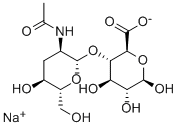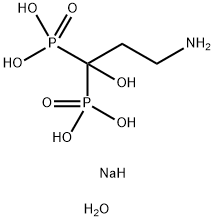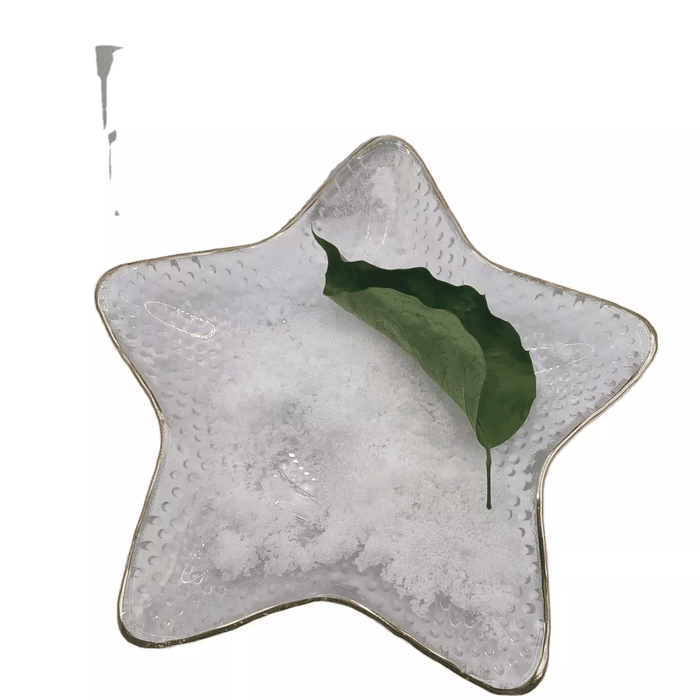(Aminomethyl)phosphonic acid
Synonym(s):AMPA
- CAS NO.:1066-51-9
- Empirical Formula: CH6NO3P
- Molecular Weight: 111.04
- MDL number: MFCD00008105
- EINECS: 623-325-5
- SAFETY DATA SHEET (SDS)
- Update Date: 2025-01-27 09:38:02

What is (Aminomethyl)phosphonic acid?
Chemical properties
white crystals or powder
The Uses of (Aminomethyl)phosphonic acid
(Aminomethyl)phosphonic acid is used in the preparation of (acetylamino-methyl)-phosphonic acid by reacting with acetic anhydride. Further, it is used in the development of immobilized metal affinity chromatography column based on organic-inorganic hybrid silica monolith.
The Uses of (Aminomethyl)phosphonic acid
Aminomethanephosphonic acid is a degradation product of glyphosate (G765000), a herbicide.
Definition
ChEBI: A member of the class of phosphonic acids that is phosphonic acid substituted by an aminomethyl group. It is a metabolite of the herbicide glyphosate.
General Description
(Aminomethyl)phosphonic acid is a metabolite of amitrole and glyphosate herbicides and was analyzed by HPLC using an electrochemical detector.
Properties of (Aminomethyl)phosphonic acid
| Melting point: | 300 °C |
| Boiling point: | 358.0±44.0 °C(Predicted) |
| Density | 0.6 |
| RTECS | SZ6526000 |
| storage temp. | Keep in dark place,Inert atmosphere,Room temperature |
| solubility | water: soluble50mg/mL, clear, colorless |
| pka | pK1: 2.35;pK2: 5.9;pK3: 10.8 (25°C) |
| form | Fine Crystalline Powder |
| color | White |
| Water Solubility | soluble |
| Sensitive | Hygroscopic |
| BRN | 1701219 |
| Stability: | Stable. Incompatible with strong oxidizing agents. Protect from moisture. |
| CAS DataBase Reference | 1066-51-9(CAS DataBase Reference) |
| EPA Substance Registry System | Aminomethylphosphonic acid (1066-51-9) |
Safety information for (Aminomethyl)phosphonic acid
| Signal word | Warning |
| Pictogram(s) |
 Exclamation Mark Irritant GHS07 |
| GHS Hazard Statements |
H315:Skin corrosion/irritation H319:Serious eye damage/eye irritation H335:Specific target organ toxicity, single exposure;Respiratory tract irritation |
| Precautionary Statement Codes |
P261:Avoid breathing dust/fume/gas/mist/vapours/spray. P264:Wash hands thoroughly after handling. P264:Wash skin thouroughly after handling. P280:Wear protective gloves/protective clothing/eye protection/face protection. P304+P340:IF INHALED: Remove victim to fresh air and Keep at rest in a position comfortable for breathing. P305+P351+P338:IF IN EYES: Rinse cautiously with water for several minutes. Remove contact lenses, if present and easy to do. Continuerinsing. P405:Store locked up. |
Computed Descriptors for (Aminomethyl)phosphonic acid
| InChIKey | MGRVRXRGTBOSHW-UHFFFAOYSA-N |
New Products
3-Iodophenylacetic acid 3-Pyridineacetonitrile, α-hydroxy- 2-Propanamine, 1-chloro-, hydrochloride (9CI) 3-(hexyloxy)-4-(pyridin-3-yl)-1,2,5-thiadiazole 2-Hexyn-1-ol Dibenzo-18-crown-6 Nickel(II) perchlorate hexahydrate, 98% 4-Bromophenylacetonitrile, 95% 3-Bromo-4-fluoroaniline, 97% Sodium tetraborate decahydrate, 98% Palladium(II) acetate, trimer, Pd 99% 4-Bromo-2-chlorotoluene, 97% N N Dimethylformamide Dimethyl Acetal (Dmf Dma) 2,3-Dichloro Benzoyl Cyanide [Side Chain] Bis(2-Chloroethyl) Amine Hydrochloride L-Glutamic Acid Diethyl Ester Hydrochloride 5-(Difluoromethoxy)-2-Mercaptobenzimidazole 1-Ethyl-3-(3-Dimethylaminopropyl)-Carbodiimide Hydrochloride [EDC Hcl] 1,4-Napthoquinone Bromoiodomethane Sodium Bicarbonate Methylene Dichloride (MDC) Ethyl Acetate Indole-3-Carbinol (I3C)Related products of tetrahydrofuran








You may like
-
 1066-51-9 Aminomethanephosphonic acid 99%View Details
1066-51-9 Aminomethanephosphonic acid 99%View Details
1066-51-9 -
 (Aminomethyl)phosphonic acid CAS 1066-51-9View Details
(Aminomethyl)phosphonic acid CAS 1066-51-9View Details
1066-51-9 -
 (Aminomethyl)phosphonic Acid CAS 1066-51-9View Details
(Aminomethyl)phosphonic Acid CAS 1066-51-9View Details
1066-51-9 -
 (Aminomethyl)phosphonic acid CAS 1066-51-9View Details
(Aminomethyl)phosphonic acid CAS 1066-51-9View Details
1066-51-9 -
 17604-74-9 3-Pyridineacetonitrile, α-hydroxy- 98+View Details
17604-74-9 3-Pyridineacetonitrile, α-hydroxy- 98+View Details
17604-74-9 -
 Cyclohexane, (2-propynyloxy)- 67967-07-1 98+View Details
Cyclohexane, (2-propynyloxy)- 67967-07-1 98+View Details
67967-07-1 -
 3-Iodophenylacetic acid 1878-69-9 98+View Details
3-Iodophenylacetic acid 1878-69-9 98+View Details
1878-69-9 -
 132945-75-6 (S)-1-Boc-3-methanesulfonyloxy-pyrrolidine 98+View Details
132945-75-6 (S)-1-Boc-3-methanesulfonyloxy-pyrrolidine 98+View Details
132945-75-6
Statement: All products displayed on this website are only used for non medical purposes such as industrial applications or scientific research, and cannot be used for clinical diagnosis or treatment of humans or animals. They are not medicinal or edible.
